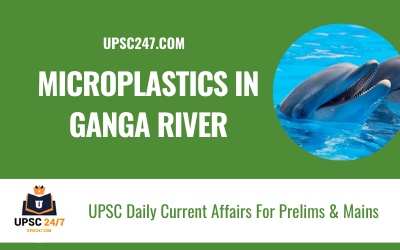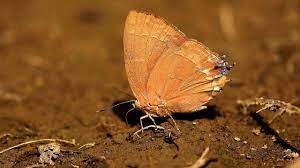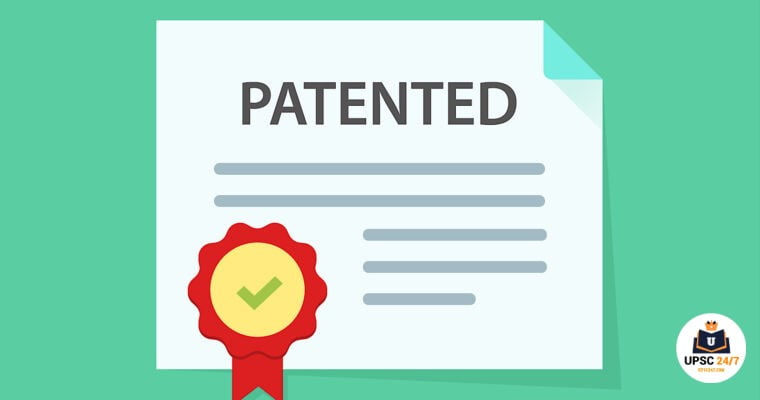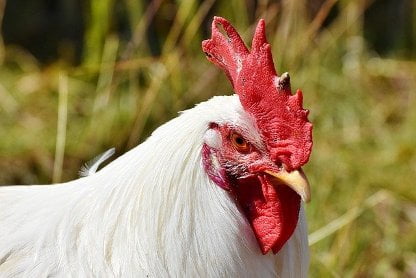Microplastics PollutionIn Ganga River | UPSC | Why In The News ? – Delhi-based NGO Toxics Link released a study this week titled, “Quantitative analysis of Microplastics along River Ganga”, which has found that the river – which flows through five states covering about 2,500 km before flowing into the Bay of Bengal – is heavily polluted with microplastics.
About the Study: Microplastics PollutionIn Ganga River
- The study was carried out in collaboration with the National Institute of Oceanography (NIO) in Goa.
- It studied the water samples at Haridwar, Kanpur, and Varanasi along River Ganga.
Key Findings of the study:
- Ganga is heavily polluted with microplastics at Varanasi, Haridwar, and Kanpur.
- Among the three cities, the water samples at Varanasi showed the maximum load of microplastics as compared to the other two cities.
- This might be due to cumulative downstream pollution as well as industrial and human activities.
Source of Microplastics in Ganga River:
Microplastics are recognised as a major source of marine pollution. Several sources of it include:
- Untreated sewage from many cities along the river’s course enters into the river.
- Industrial waste and religious offerings wrapped in non-degradable plastics pile pollutants enter into the river as it flows through several densely populated cities.
- The plastic products and waste materials released or dumped in the river break down and are eventually broken down into microparticles.

What Are The Microplastics ?
- Microplastics are tiny plastic particles that result from both commercial product development and the breakdown of larger plastics.
- As a pollutant, microplastics can be harmful to the environment and animal health.
- Microplastics are present in a variety of products, from cosmetics to synthetic clothing to plastic bags and bottles.
- Many of these products readily enter the environment in wastes.
- Microplastics, small pieces of plastic, less than 5 mm (0.2 inch) in length, that occur in the environment as a consequence of plastic pollution.
Read Also – Black Carbon Particles Contribute To Increasing COVID-19 Cases | UPSC
Properties Of Microplastics :
- Microplastics consist of carbon and hydrogen atoms bound together in polymer chains.
- Other chemicals, such as phthalates, polybrominated diphenyl ethers (PBDEs), and tetrabromobisphenol A (TBBPA), are typically also present in microplastics
- Many of these chemical additives leach out of the plastics after entering the environment.
- Microplastics are not biodegradable.
- Microplastics also are a source of air pollution, occurring in dust and airborne fibrous particles.
Types Of Microplastics :
Microplastics are divided into two types:
Primary Mircroplastics :
- Primary microplastics include microbeads found in personal care products, plastic pellets (or nurdles) used in industrial manufacturing, and plastic fibres used in synthetic textiles (e.g., nylon).
- Primary microplastics enter the environment directly through personal care products being washed into wastewater systems from households).
Secondary Microplastics :
- Secondary microplastics form from the breakdown of larger plastics.
- This typically happens when larger plastics undergo weathering, through exposure to, for example, wave action, wind abrasion, and ultraviolet radiation from sunlight.
Ganga River System
- The Ganga river system outspreads in India, Tibet (China), Nepal and Bangladesh.
- It is the largest river basin in India and accounts for about one-fourth of the total area of the country.
- It covers states of Uttar Pradesh, Madhya Pradesh, Bihar, West Bengal, Uttarakhand, Jharkhand, Haryana, Chhattisgarh, Himachal Pradesh and Union Territory of Delhi.
| Place | Confluence |
| Devprayag | Bhagirathi + Alaknanda |
| Rudraprayag | Mandakini + Alaknanda |
| Karnaprayag | Pindar + Alaknanda |
| Vishnuprayag | Dhauliganga + Alaknanda |
The Five Prayags Are :
- Devaprayag, the place of confluence of Bhagirathi river and Alaknanda river.
- Rudraprayag, the place of confluence of Mandakini river and Alaknanda river.
- Nandaprayag, the place of confluence of Nandakini river and Alaknanda river.
- Karnaprayag, the place of confluence of Pindar river and Alaknanda river.
- Vishnuprayag, the place of confluence of Dhauliganga river and Alaknanda river.
Major Tributaries of the Ganga River
Right Bank Tributaries of the Ganga River
- Yamuna River
- Chambal River
- Banas River
- Sind River
- Betwa River
- Ken River
- Son River
- Damodar River
Left Bank Tributaries of the Ganga River
- Ramganga River
- Gomti River
- Ghaghra River
- Kali River
- Gandak River
- Burhi Gandak
- Kosi River
For Full Details Of Ganga River System – Click Here
National Institute of Oceanography, India
- The National Institute of Oceanography, founded on 1 January 1966.
- It is an autonomous research organization in India to undertake scientific research and studies of special oceanographic features of the Northern Indian Ocean.
- Headquartered in Goa,
- It has regional centres in Kochi, Mumbai and Vizag.
Source – The Hindu & Indian Express








